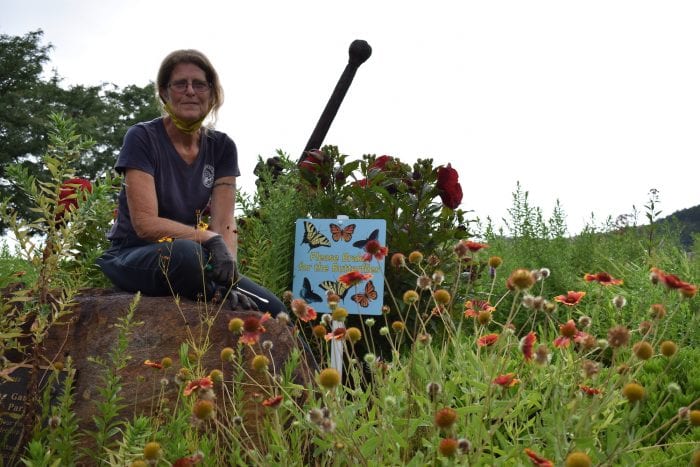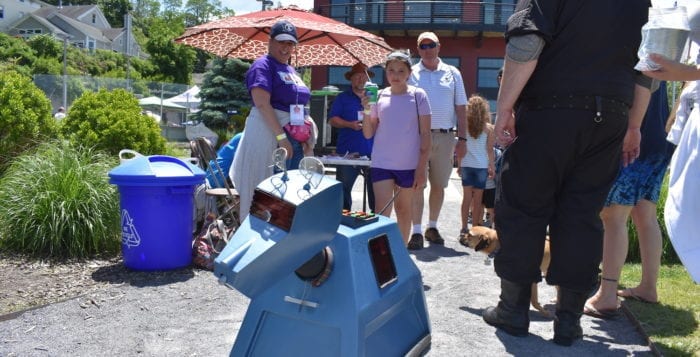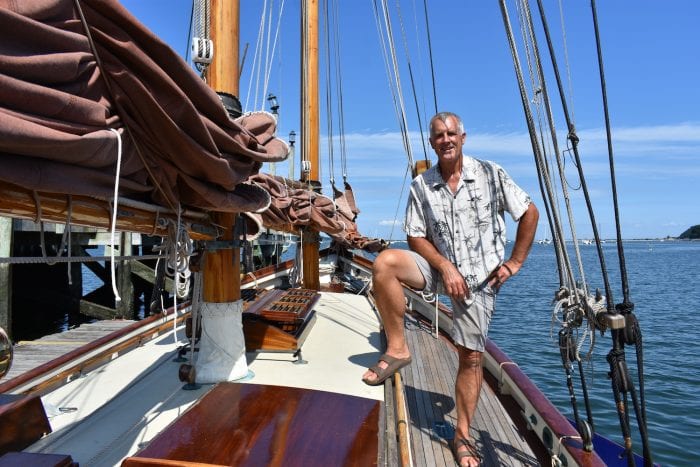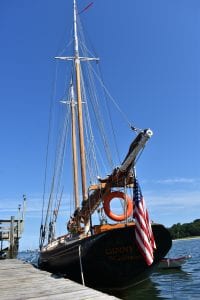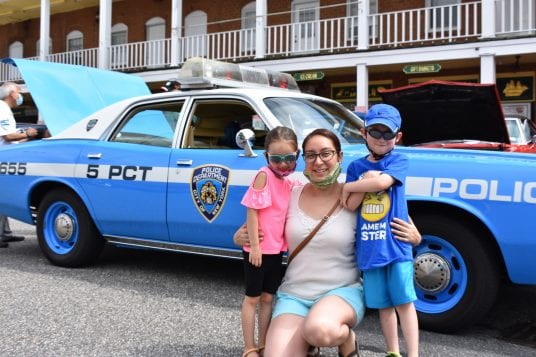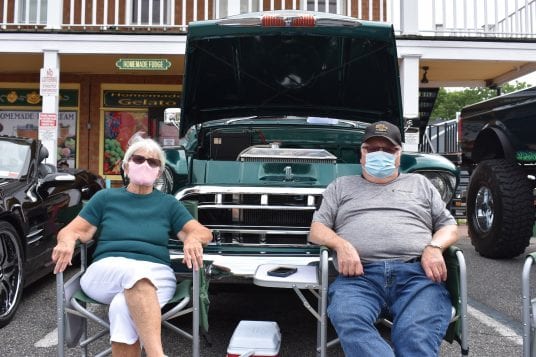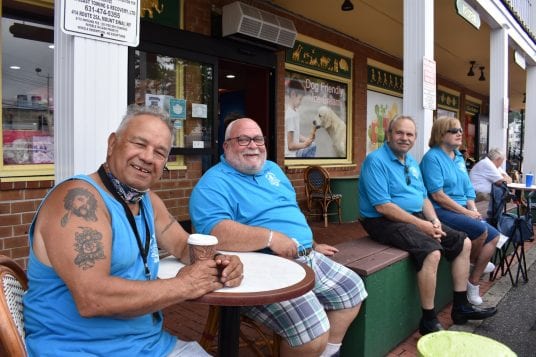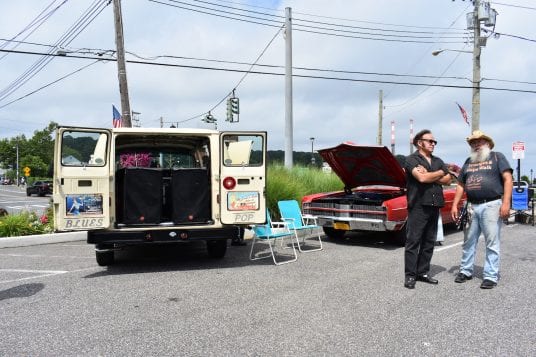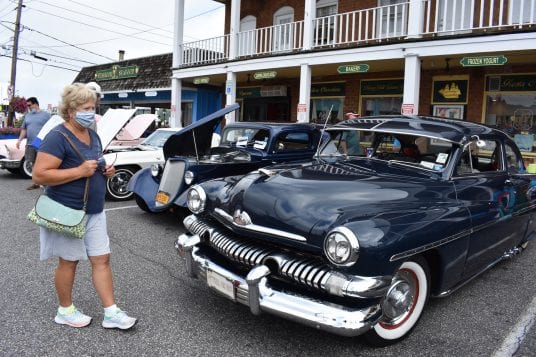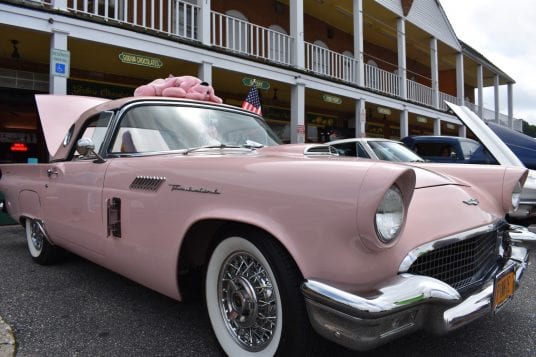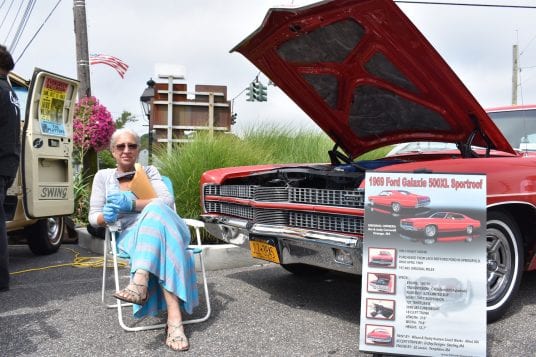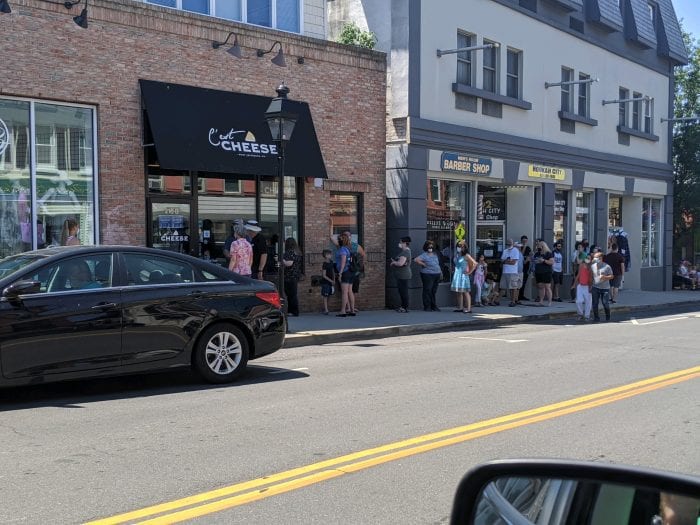If Caran Markson could make the world green, cover it in manicured sets of pollinating flowers and sweet smelling herbs, she would.
Hearing her talk about planting and gardening, the possibilities seem endless. If she had unlimited hours in the day, she would pick up every spare piece of litter on the road from Port Jeff to Montauk, she would kneel in the medians along Route 25A with cars flashing past on either side and weed the curbs of their overgrown stalks and giant vegetation. If she was the queen of gardening, there would be a pocket park on every corner of every publicly accessed street in Suffolk County, or even wider, all of New York state. If she was the monarch of the pollinating flowers, there would be a gardener for every county, town and village, and she would lead her army from the front.
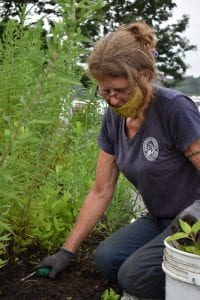
To hear her speak, one may truly believe the world could be green from one end to the other, if only there were more people with mindsets like hers.
“A gardener’s work is never done,” Markson said. “Turn around after you’ve done something, and if you don’t enjoy it or see the progress you’ve made, then you’ve got to go do something else.”
But alas, she can only control what goes on in Port Jefferson village, and there’s more than enough there to keep her occupied. Since she started six years ago, she has turned from one of two seasonal part-time village gardeners to the lone full-time caretaker of the village’s many pocket parks. She’s out nearly every day of the week, most of the time beginning the job at 6 a.m. She’s out on the weekends too. She’s out in the blazing sun and the drizzling rain. In normal times, she would open the basketball court and Rocketship Park and take out the trash. She still walks all around the village and picks up litter, every single discarded wrapper and cigarette butt. To her, strewn garbage is public enemy number 1.
“Because I’m a nut, and I’m an absolute anal person as far as litter is concerned,” she said. “I think it’s absolutely disgraceful everyone throws everything on the ground.”
In autumn, she keeps the parks clear of debris. In the winter, she’s out shoveling snow. She has worked with the Long Island Explorium to construct three rain gardens at Village Hall, the Village Center and the Department of Public Works building, the last called the Whale’s Tail for its unique shape. She works an area of 3 square miles, from the country club to downtown and uptown to the village limits near the train station.
At 61, with a wiry frame, Markson is like a coiled spring as she attacks green spots in the village such as the gardens next to Harborfront Park and in the center of the roundabout next to the Village Center. Three years ago, she described it as “a bunch of weeds, and a bunch of overgrown looking bushes.” The village parks department helped remove the old shrub, and Markson replanted it with many native plants like Sweet Joe-Pye weed and tall asters. Though she said some thought the plantings seemed sparse, now the area is full to bursting with color once her plants grew out. Among mistakes novice gardeners often make, the biggest are forgetting the importance of maintenance and not recognizing that plants will grow out to occupy more of the space they’re in.
It’s been much the same for Markson as she’s grown to fit her role. Her family is from Port Jeff, and both her parents and children attended Port Jefferson School District. Her mother was the one to originally teach her about horticulture. She quit being an oral surgeon’s assistant to take care of her terminally ill mother. Once she passed, Markson came back to Port Jeff to “reinvent myself.” Her children are in their 40s, and the plants dotting the village have become her babies.
Mayor Margot Garant said the gardener has an annual budget of around $15,000, but that Markson “does magic with it,” making it stretch by accepting donations from Port Jeff and neighboring communities and by replanting from denser areas of the village to parts that need more. The village gardener and mayor also thanked Kunz Greenhouses in Port Jefferson Station for working with them to provide many of the flowers and greenery all across the village.
The family-owned Kunz Greenhouses has been around for close to 60 years and has been working with the village for nearly four decades. Carolyn Zambraski, who along with her brother is the second generation of greenhouse owners, said she often works with Markson, offering suggestions of native plants and ideas for different planting beds. Driving around the area, the greenhouse owner said the village gardener’s work has made a noticeable improvement in Port Jeff.
“It’s certainly getting better,” she said. “The anchor is a great example, as that was really an eyesore with evergreens and rocks a few years back. The village is going in the right direction.”
Port Jefferson also put up the money for Markson to go through her Master Gardener program with the Cornell Cooperative Extension. She received her certificate of completing 85 hours of training July 25.
“She cares 1,000 percent — her whole heart is in it,” Garant said of Markson. “I find her to be an exemplary employee with an old-fashioned work ethic you can’t just get anywhere.”
As much as she does, Markson isn’t stopping. She has an idea to create a children’s garden in a small patch of grass next to Rocketship Park, adding she is working with Port Jeff’s grant writer Nicole Christian to get some type of funding for such a project. She imagines it as a place where young people can walk through and learn about nature and planting.
She also wants to work with school-aged children to create small gardens next to the downspouts at Village Hall, where she says there are erosion issues.
Beyond that, though, her ambition stretches past what might be humanly possible. She wishes there were more like her on the town, county and state level who paid as much attention to beautification, to make every stretch of road, street, parking lot, park as perfect as can be.
“Beautification is so important,” she said. “Everything should look beautiful.”

